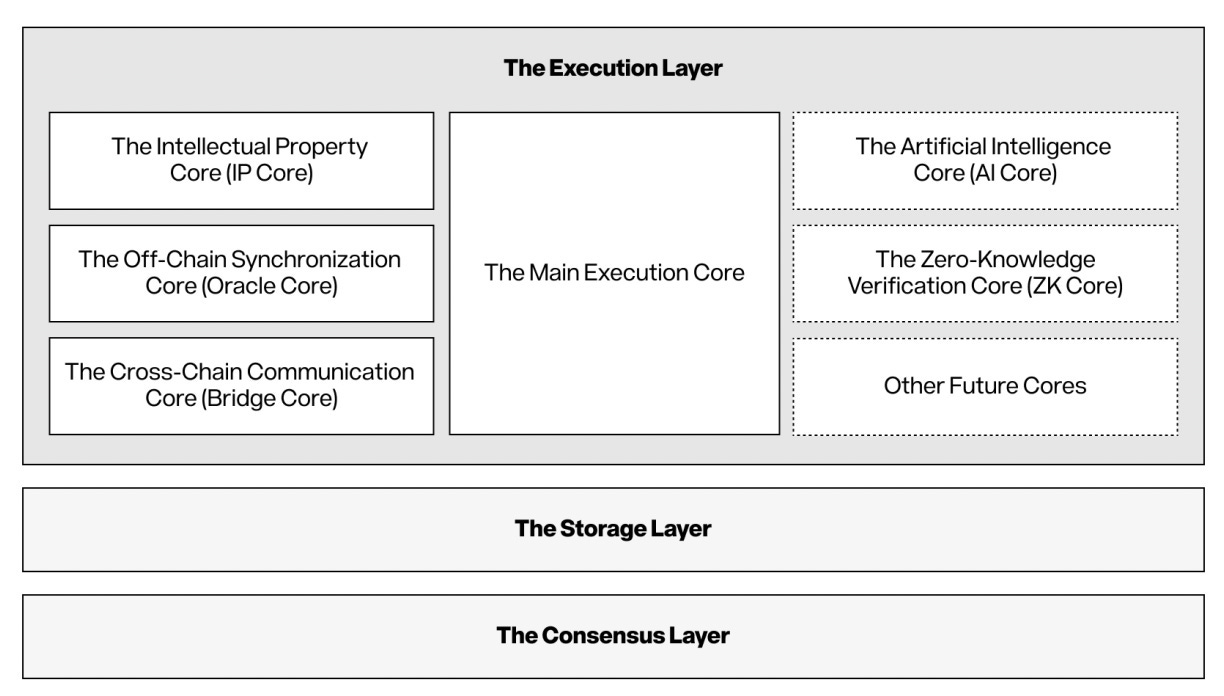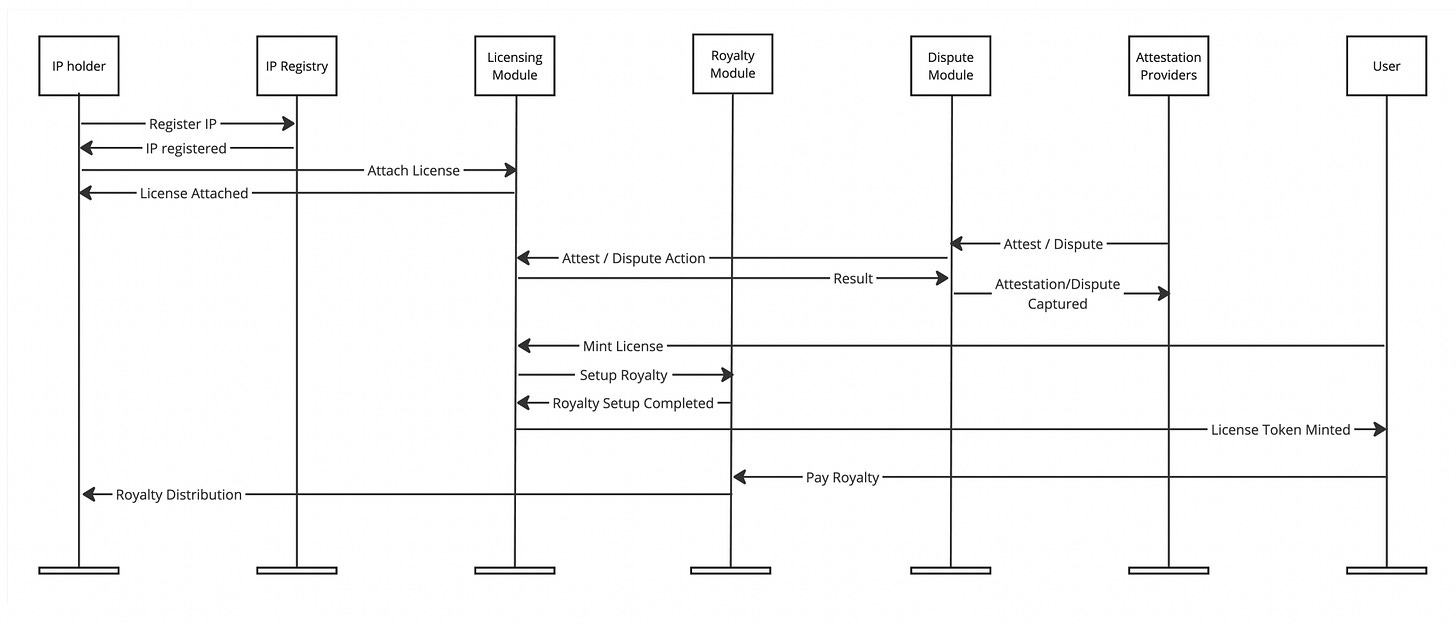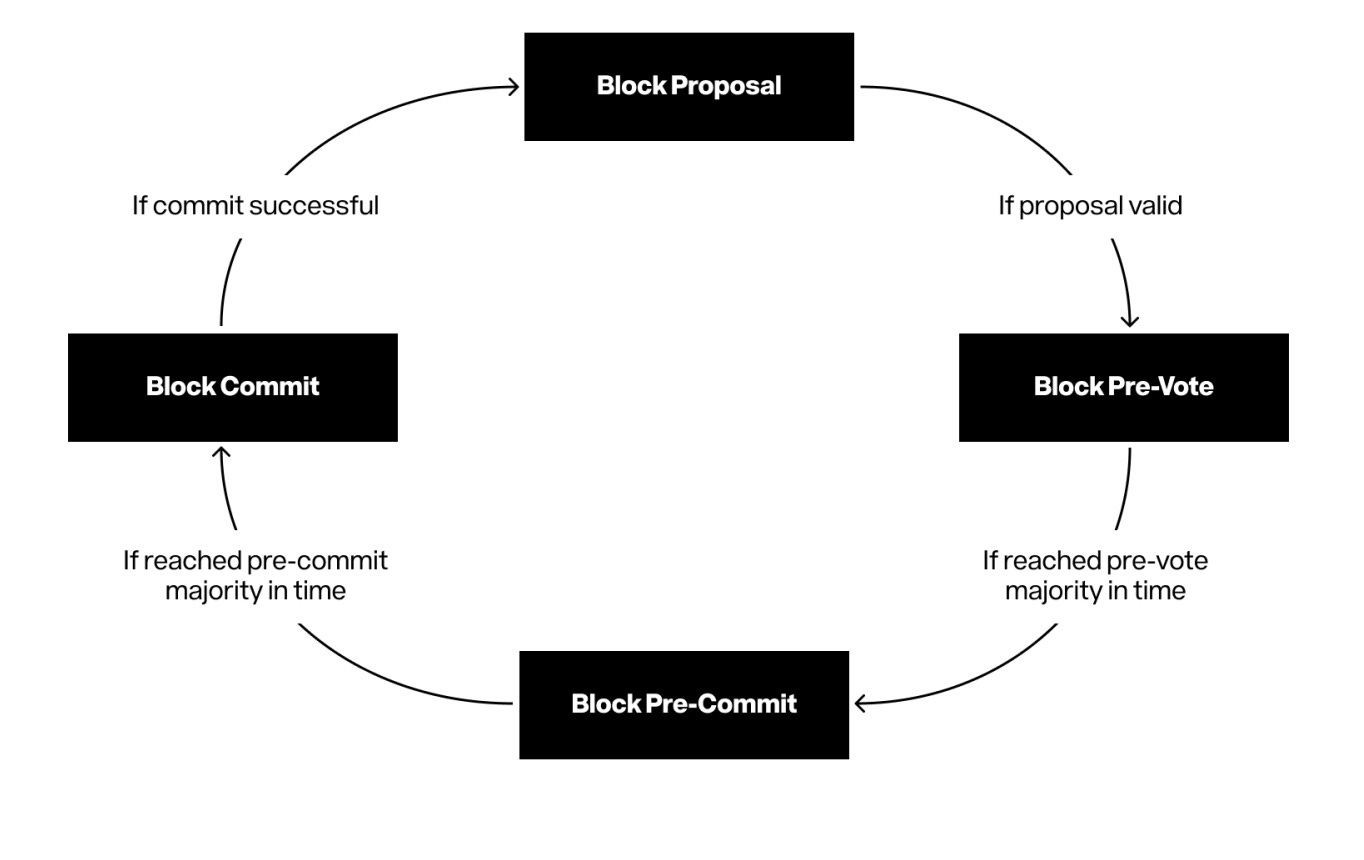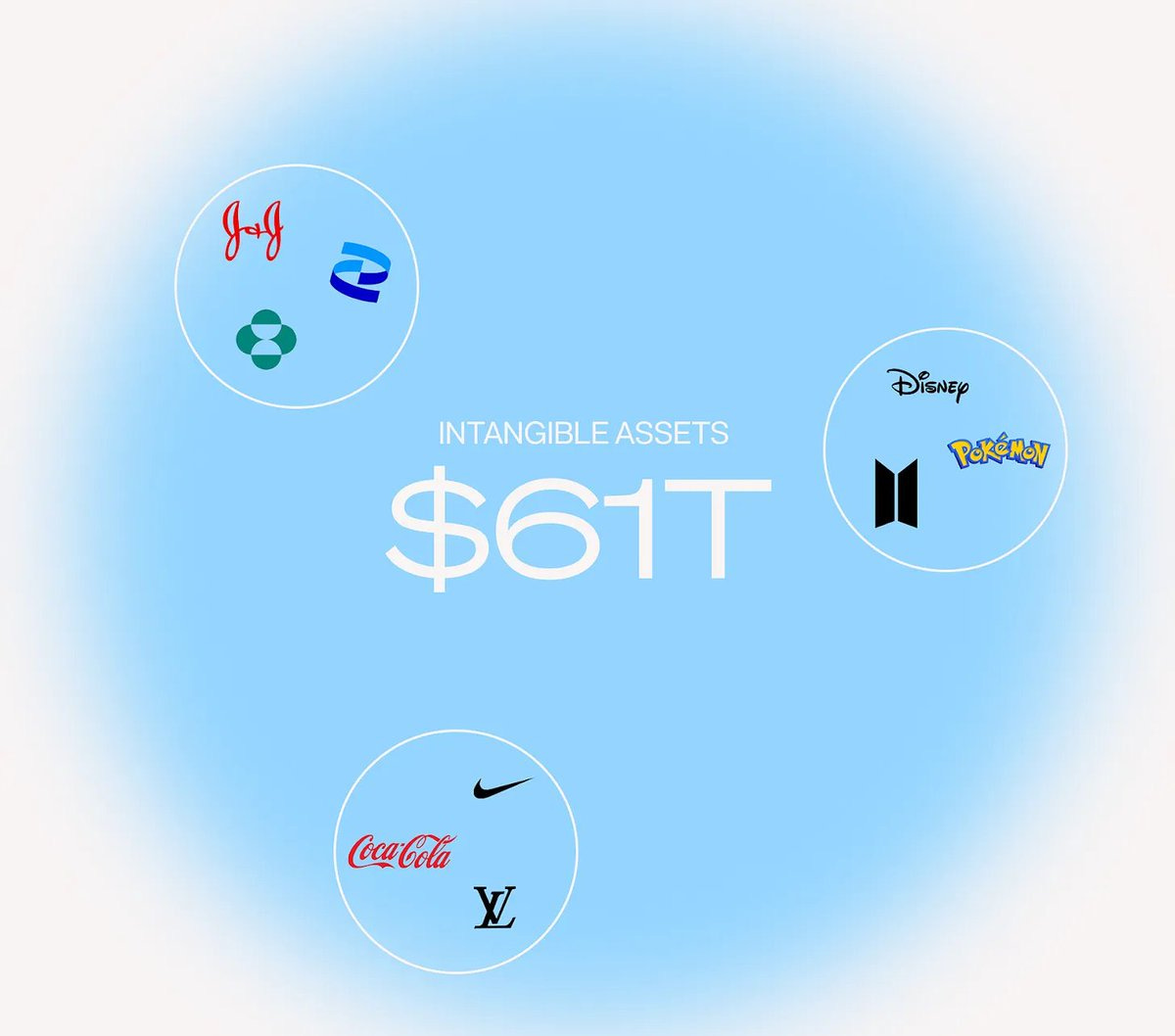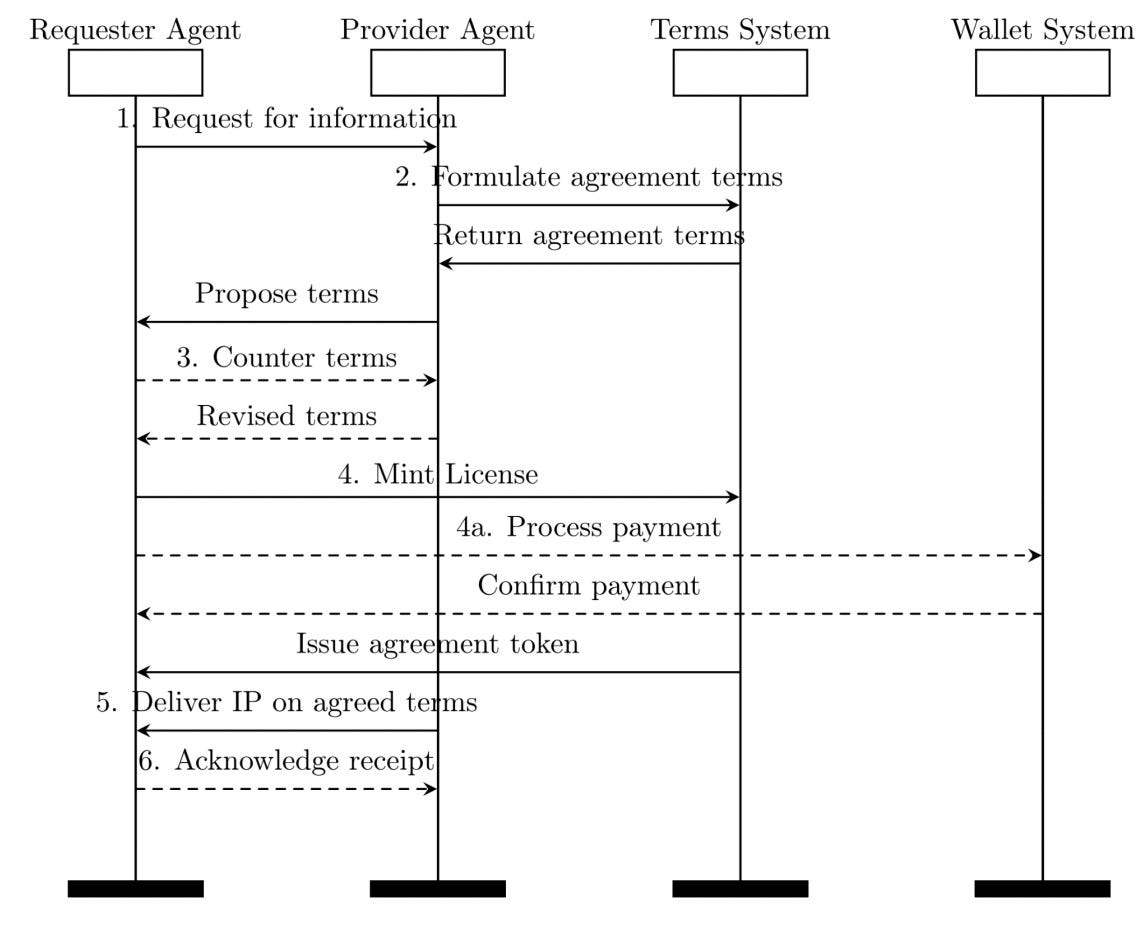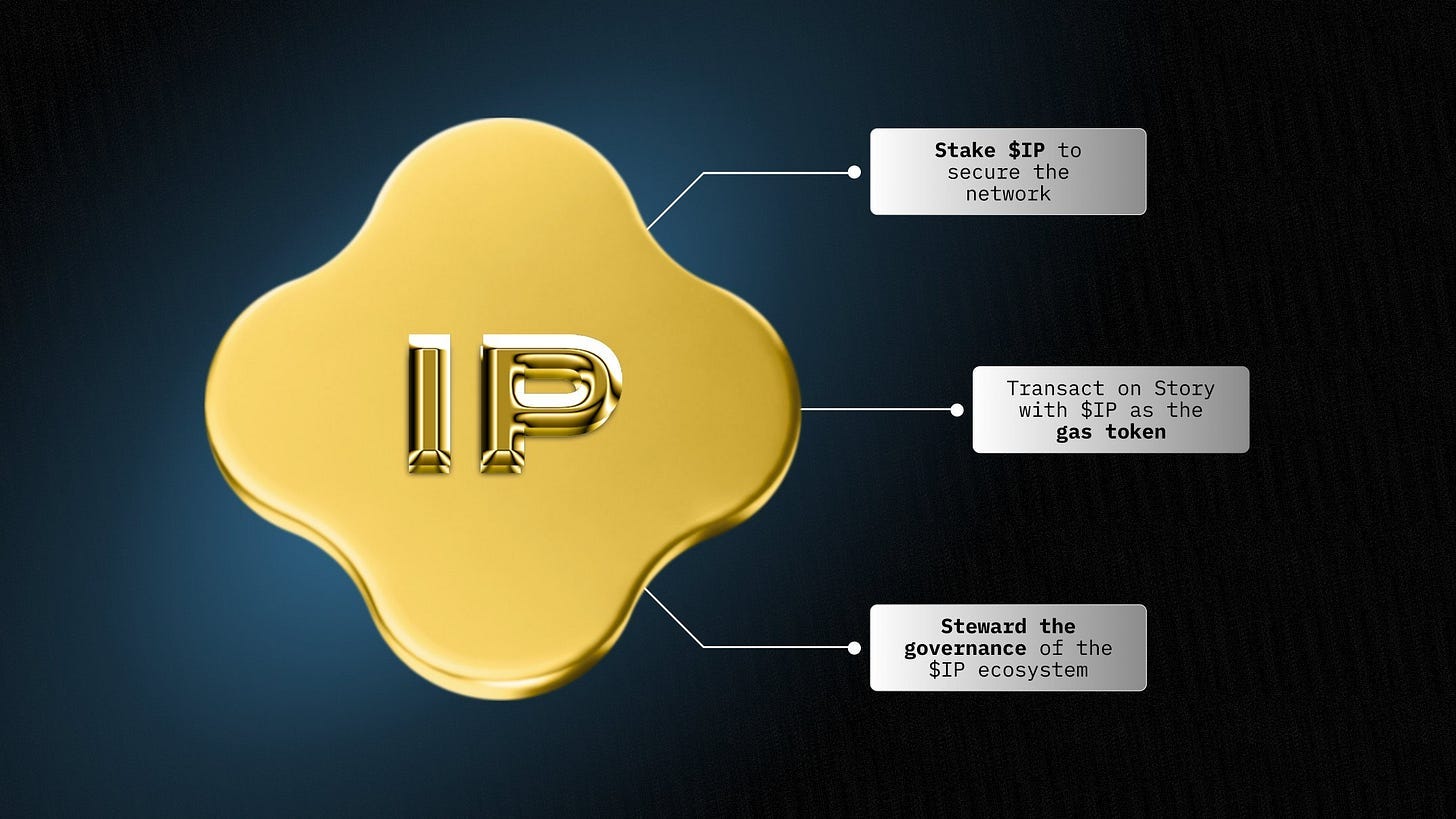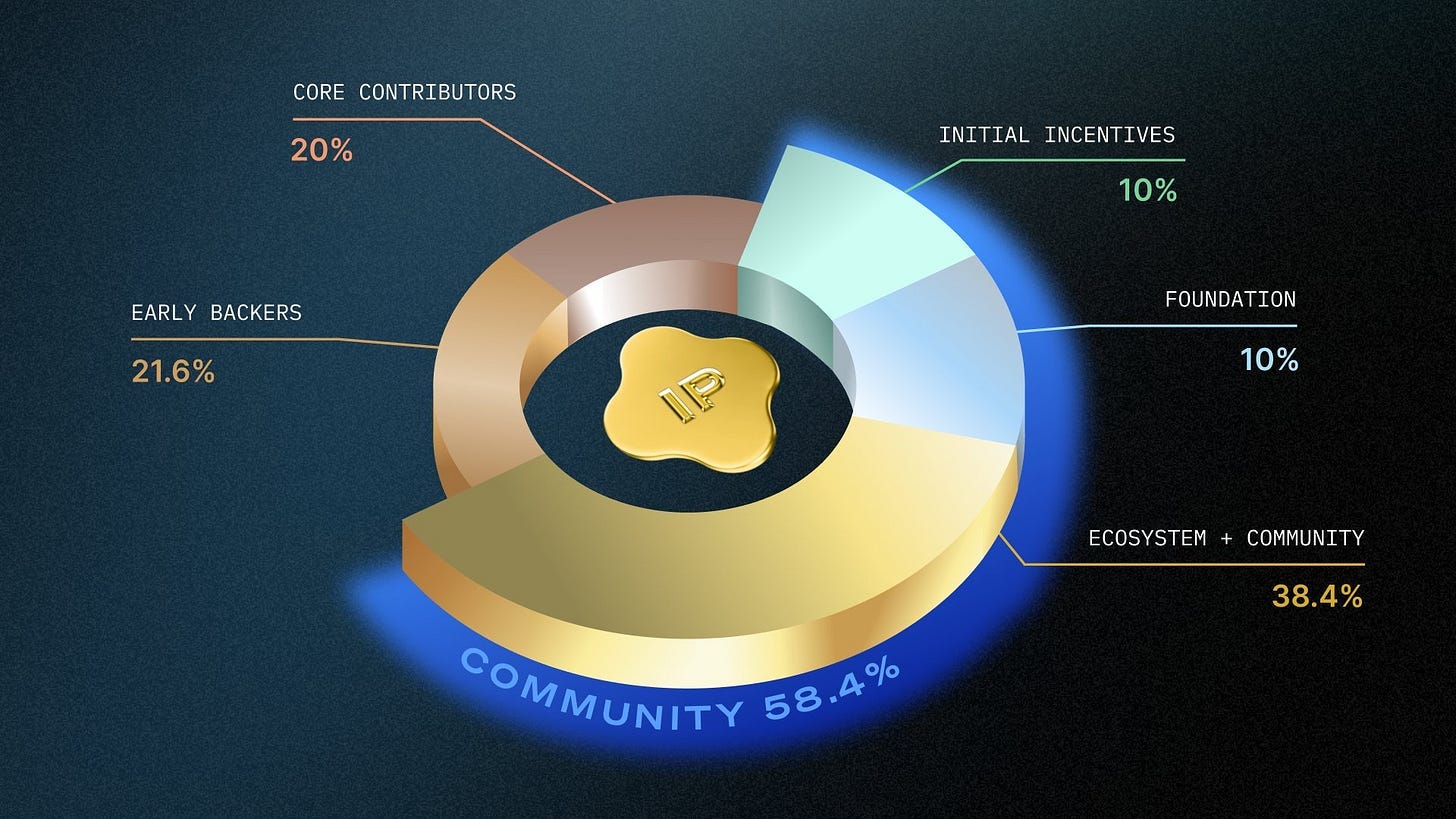Everything You Need to Know About Story and its Upcoming Launch
It’s launch season!
https://x.com/StoryProtocol/status/1887833486645702865
Story Protocol has recently announced the details of its native token, IP.
This article analyzes Story’s architecture and tokenomics to highlight its impact on the intellectual property (IP) market.
Story Protocol
I already published a short introduction piece on Story almost a year and a half ago.
Since then, significant progress has been made, including concrete plans and technical developments.
For those unfamiliar with Story, its primary objective is to address the inefficiencies in traditional, centralized IP management systems.
By doing so, they aim to decentralize the IP market by creating a programmable, peer-to-peer (p2p) marketplace for knowledge and creativity.
Challenges in the Existing IP Landscape
Centralized Intermediaries and the Costs of IP Transactions
IP rights and their economic value are predominantly controlled by centralized intermediaries, such as publishing platforms and social media companies. These entities impose significant transaction costs and retain substantial control over ownership transfers and monetization opportunities.
The Impact of Artificial Intelligence on IP Rights
The rise of artificial intelligence (AI) has introduced new challenges for the traditional IP system. AI models can generate and distribute creative outputs at an unprecedented scale.
However, in their current state, AIs often leverage existing IP without precise mechanisms for attribution or fair compensation to the original creators. This raises concerns regarding the sustainability of current IP frameworks and highlights the need for a fair and accessible decentralized alternative.
Story Protocol as a Solution
Story Protocol proposes the creation of an open and programmable market that facilitates direct P2P transactions involving IP.
The key components of this system include:
A Universal IP Repository – A standardized ledger for storing and managing IP assets.
A Programmable P2P Market – An open marketplace enabling direct transactions without intermediaries.
Anyone can use Story to buy, sell, or monetize ideas without intermediaries.
What makes it possible?
Technical Architecture of Story Protocol
The Story architecture focuses on a “multi-core” execution, where each protocol layer is specialized for different tasks. This is comprised of:
Main Core: coordinating specialized cores
Specialized Execution cores: optimized for speed, privacy, or scalability
Story relies on a division of labour where each layer operates separately and with a specialized focus.
The whole network runs on a set of validators tasked with:
Consensus
Transaction Processing
Security
1. The Execution Layer
The execution layer is responsible for processing transactions and executing smart contracts. Story Protocol maintains full Ethereum Virtual Machine (EVM) compatibility, operating through a system of primary and specialized cores (which are used when transactions refer to them). This approach enables optimized transaction execution based on specific attributes such as speed, privacy, and scalability.
Each specialized core is designed to meet the following criteria:
Determinism – Ensuring that all transactions produce consistent, verifiable outcomes.
Measurability – Providing predictable gas cost calculations in advance.
At launch, Story will feature three specialized cores:
IP core
Offchain synchronization
Cross-chain communication
1.1 IP Core
The IP Core is the foundation for tracking intellectual property rights on-chain, offering native support for IP assets.
All IP assets are represented as “graphs”, where:
NODES: atomic assets
EDGES: legal and economic commitments between them.
This graph-based structure enables Story to maintain a transparent historical record of IP ownership, licensing agreements, and derivative applications.
Additionally, Story Protocol introduces the Proof of Creativity (PoC) framework, which provides:
An open IP repository – A standardized ledger with native storage for registering, storing, and verifying IP-related assets and licenses.
Modules for seamless interaction – Enabling the creation of digital IP markets with transparent rights tracking.
The PoC mechanism – The “provenance and exchange layer for IP”, allowing IP owners to register assets as IPAsset NFTs (ERC-721), facilitating licensing agreements and royalty management.
The POC also establishes or verifies relationships between users and assets. Each time, the protocol checks the historical IP parameters to ensure rules are applied consistently, effectively becoming a “universal compatibility engine” for IP.
To ensure comprehensive verification and dispute resolution Story integrates off-chain mechanisms that validate registrations, verify IP ownership, and initiate decentralized dispute resolution processes.
1.2 Off-chain Synchronization Core
IP is a complex topic often involving off-chain components, such as identity verification, infringement assessments, and legal attestations. To address this, Story introduces an off-chain synchronization core that facilitates offchain data integration through oracles and other external providers.
For instance, the Story Orchestration Service (SOS) framework enables third-parties to provide attestations for onchain services, leveraging an offchain network.
1.3 Cross-chain Communication (CCC) Core
IP is not static and is used widely across networks. This raises the question of how to validate proofs when transaction costs become prohibitive (e.g. it’s not possible to implement an EVM contract checker), and how to enforce IP ownership.
To facilitate interoperability, the CCC core ensures:
Interoperable verification of ownership – Ensuring IP transactions comply with predefined terms across different networks.
Cross-chain enforcement mechanisms – Preventing unauthorized usage and facilitating secure transactions using IP assets as collateral.
Future Cores
The Story modules are customizable, and we can already see two possible additions in the future:
AI core: to optimize AI onchain operations
The Zero-Knowledge (ZK): for efficient verification of zero-knowledge proofs.
2. The Storage Layer
The storage layer optimizes data organization by integrating both on-chain and off-chain storage solutions, including Arweave and IPFS.
It would be in fact, not feasible to store all data onchain. At the same time, using offchain storage like IPFS would limit the user experience.
This hybrid approach enhances scalability, cost efficiency, and redundancy while preserving accessibility for IP assets, allowing:
Optimized Data Placement and Storage Strategies: using usage patterns, the storage layer can adjust and adapt to the data handled, balancing “performance, scalability, cost, proof size and redundancy across heterogeneous storage systems.”
Direct model inference: thanks to the fact that machine learning models and their metadata are stored alongside each other
1.3 The Consensus Layer
Story employs CometBTF, a Tendermint-based consensus mechanism developed initially within the Cosmos ecosystem. This consensus model offers:
Resilience against malicious activity – Consensus can be achieved even if up to 33% of validators act dishonestly.
Liveliness – guaranteed with 2/3+ of the validators are active
Instant finality – fast finality as close as when transactions are included in a block is essential for institutional investors and any application that needs “immutability”.
Modular: Within Story, consensus is decoupled from execution, keeping the consensus layer flexible and able to introduce future mechanisms.
Currently, Story is based on a Proof-of-Stake (PoS) mechanism, with validators required to put a stake as an incentive for honest behaviour.
Use Cases and Applications
https://x.com/StoryProtocol/status/1886793841576976630
Now that we have defined the architecture characterizing the Story network, let’s dive into some possible use cases taken from their whitepaper:
Universal Market for IP:
How can blockchain adapt to nontangible asset classes?
Blockchain technology has traditionally focused on tangible assets, but Story extends these capabilities to intangible assets, solving the previous inefficiencies by creating P2P markets using programmable IP.
Key use cases include:
IP as Real-World Assets (RWA IP) – Enabling anyone to update IP catalogues on Story
IPFi (IP-based DeFi) – Using IP as collateral for DeFi applications.
AI-powered automations – Allowing AI agents to license and monetize IP autonomously.
Empowering AI Agents
Agents: trained using IP, producing IP as outputs.
Story facilitates AI-driven transactions by establishing a settlement layer for IP, supporting:
Collaborative AI models – AI agents can enhance each other’s learning by leveraging shared datasets made of IP assets. This is indicated in the image below, where each model leverages other models and datasets.
Efficient model fine-tuning – Reducing computational overhead while maintaining performance.
A marketplace for high-quality training datasets – Incentivizing the contribution of valuable data for AI development.
Aside from human-to-agent relations, Story can accommodate Agent-to-agent interactions, enabling autonomous agent interaction, collaboration, and value generation.
As part of it, Story created the Agent Transaction Control Protocol for Intellectual Property (Agent TCP/IP), defining standardized interactions between autonomous AI agents:
Agents can negotiate, license, and enforce IP agreements autonomously, with onchain execution and offchain legal enforceability.
Opens space for agents to become autonomous actors, “improving themselves by licensing training data and monetizing their outputs by registering their IP”.
The network is open and scalable: as more agents join, its capabilities grow.
Specialized agents can collaborate with each other (e.g. create movies, songs etc.)
We end this paragraph with a great thread on why Story is well-positioned to empower AI agents:
https://x.com/microglia_8888/status/1887011959218049245
One of the most interesting developments on this matter is Zerebro becoming one of the first agent validators for Story:
https://x.com/StoryProtocol/status/1887531567918059732
The IP Token
The Story Protocol ecosystem is powered by IP, its native token.
https://x.com/StoryProtocol/status/1887833486645702865
The token serves multiple roles, including:
Network security – Validators stake IP to ensure honest participation.
Transaction facilitation – All protocol interactions utilize IP as a medium of exchange.
Agent-to-agent transactions – Enabling AI-driven IP negotiations.
Governance
According to the information released a few days ago, the IP token will be distributed with a fair launch:
IP will be distributed as follows:
Notably, they are trying to follow the “community-led” launches meta. However, it is not clear explicitly what % will be actually dedicated to users and not to foundations, R&D, ecosystem, or the foundation. In fact, the 58.4% above refers to “Ecosystem & Community, Foundation, and Initial Incentives.”
The Story Ecosystem
Memex x NFTs: https://x.com/StoryProtocol/status/1887231968540303834
Sci-fi Universe: https://x.com/emergenceverse
DeFai Agent: https://x.com/BenjaminOnIP
Create song and leverage them for yield: https://x.com/Aria_Protocol
Meme launchpad: https://x.com/ipdotworld
Great thread on more resources: https://x.com/thebryanjun/status/1886853528758415375
Designs registered as IP on Story: https://x.com/StoryProtocol/status/1887018331691212815
More on how it works: https://x.com/0xDesigner/status/1886547104430219384




